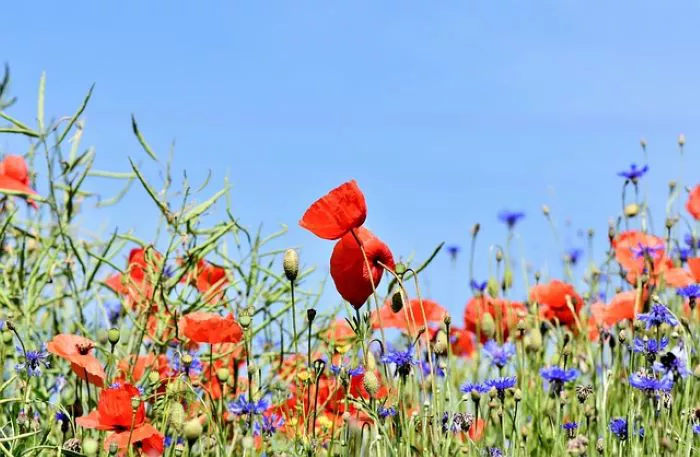Preserving wildflowers allows you to enjoy their beauty long after the blooming season has ended. Whether for decoration, educational purposes, or sentimental reasons, there are various methods to effectively preserve wildflowers. This article provides a professional guide on how to preserve wildflowers, detailing the materials needed, techniques, and best practices for successful preservation.
Understanding the Importance of Preservation
Wildflowers are not only beautiful but also play a vital role in ecosystems. They support pollinators and contribute to biodiversity. Preserving these flowers can help maintain their beauty and significance. Additionally, preserved wildflowers can serve as a reminder of nature’s beauty and the importance of conservation.
Selecting the Right Wildflowers
Choosing the right wildflowers is the first step in the preservation process. Not all flowers preserve equally well. Some species retain their color and shape better than others. Consider the following factors when selecting wildflowers for preservation:
Freshness: Choose flowers that are freshly picked and in full bloom. Avoid wilted or damaged flowers, as they will not preserve well.
Species: Some of the best wildflowers for preservation include daisies, lavender, and sunflowers. Research which species are best suited for your preservation method.
Time of Day: Pick flowers in the morning after the dew has dried. This is when they are most hydrated and at their freshest.
Preparing the Flowers for Preservation
Once you have selected your wildflowers, proper preparation is essential. Follow these steps to prepare the flowers:
Remove Leaves: Strip off any excess leaves from the stems. Leaves can trap moisture and lead to mold during the preservation process.
Cut Stems: Trim the stems to your desired length. Use sharp scissors or pruning shears to make clean cuts.
Group Flowers: If preserving multiple flowers of the same species, group them in small bunches. This makes handling easier and ensures even drying.
Methods of Preservation
There are several effective methods for preserving wildflowers. Each method has its advantages and is suited for different types of flowers. Here are some popular techniques:
Air Drying
Air drying is one of the simplest and most common methods for preserving wildflowers. This method works best for flowers with sturdy stems and petals.
Hang the Flowers: Tie the stems together in small bunches. Use a rubber band or string to secure them tightly.
Choose a Location: Hang the bunches upside down in a cool, dark, and dry area with good air circulation. Avoid direct sunlight, as it can fade colors.
Drying Time: Allow the flowers to dry for two to three weeks. Check periodically for dryness. Once they feel crisp, they are ready for use.
Pressing
Pressing is an excellent method for preserving the shape and color of wildflowers. This technique is ideal for flat flowers like daisies and pansies.
Prepare the Press: Use a flower press or two heavy books. Place a piece of parchment paper or absorbent paper between the pages.
Arrange the Flowers: Lay the flowers flat on the paper. Space them apart to avoid overlap.
Close the Press: If using a flower press, tighten the screws. If using books, stack additional weight on top to apply pressure.
Drying Time: Leave the flowers pressed for two to four weeks. Check for dryness and replace the paper if it becomes damp.
Silica Gel Drying
Silica gel drying is a method that preserves the color and shape of flowers exceptionally well. This technique is ideal for delicate flowers.
Gather Materials: You will need silica gel, a container with a lid, and your wildflowers.
Prepare the Container: Pour a layer of silica gel into the bottom of the container.
Place the Flowers: Arrange the flowers on top of the silica gel. Gently cover the flowers with more gel, ensuring they are completely surrounded.
Seal and Wait: Close the container and let it sit for several days. Check the flowers after three to five days. Once they are dry, gently remove them from the gel.
Storing Preserved Wildflowers
Proper storage is essential to maintain the quality of your preserved wildflowers. Consider the following tips:
Avoid Moisture: Store preserved flowers in a dry location. Moisture can lead to mold and deterioration.
Use Airtight Containers: Keep preserved flowers in airtight containers to protect them from dust and humidity. Glass jars or plastic bins work well.
Limit Sunlight Exposure: Keep preserved flowers out of direct sunlight to prevent fading. A dark or shaded area is ideal for storage.
Displaying Preserved Wildflowers
Once you have successfully preserved your wildflowers, consider how you want to display them. There are many creative ways to showcase preserved flowers:
Framing: Use a shadow box or frame to display pressed flowers. This protects them while allowing you to enjoy their beauty.
Arrangements: Create floral arrangements using air-dried flowers. Use a vase or decorative container to showcase your work.
Craft Projects: Incorporate preserved flowers into craft projects, such as bookmarks, greeting cards, or decorative wreaths.
Conclusion
Preserving wildflowers is a wonderful way to celebrate their beauty and importance in our ecosystems. By selecting the right flowers, using appropriate preservation methods, and properly storing and displaying them, you can enjoy their vibrant colors and unique shapes for years to come. Whether for personal enjoyment or as a gift, preserved wildflowers serve as a beautiful reminder of nature’s wonders. Embrace the art of preservation and let the beauty of wildflowers enrich your life.


